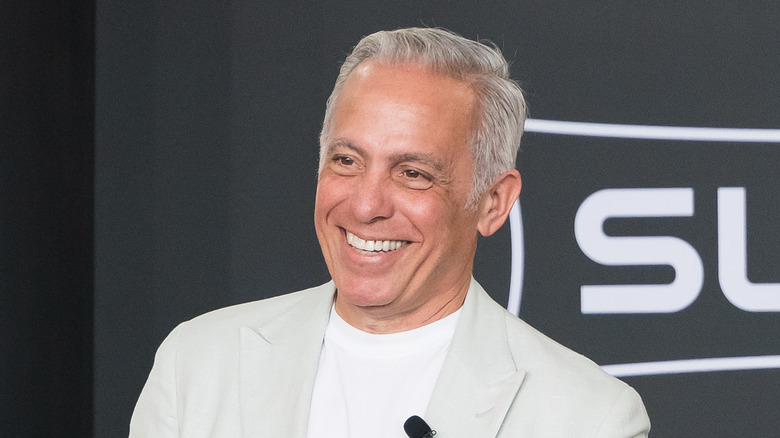Geoffrey Zakarian's Tip For Fully Cooked Salmon In The Microwave
There are plenty of mistakes you can make when cooking salmon, but one of them may be completely unexpected: not cooking it in the microwave. Sure, you could spend the time air frying it or baking it, and you can even make salmon in an Instant Pot. But according to one expert chef, you can achieve amazing results just by popping it in the microwave. To get the inside scoop on all things salmon, Food Republic spoke to Geoffrey Zakarian, chef, restauranteur, and Food Council Chair for City Harvest, a food rescue organization in New York City.
"I actually put it in the microwave, believe it or not. It really works," Zakarian shared while promoting City Harvest's Summer in the City: Jet Set 2025. "You put a pat of butter on it, put that on a plate. [Grab] an inch thick [piece of salmon], salt and pepper both sides. You cover it with either Saran Wrap or parchment paper and [cook for] one to two minutes on high before you check it." Follow these steps, and the expert promises a perfect salmon every time — with the bonus of no additional clean up.
While Zakarian's microwave method seems fairly foolproof and hassle-free, he's not opposed to using the oven to cook salmon. If you're squeamish about nuking your fish, just follow his number one rule for baking: be sure to go low and slow. The chef recommended cooking it at 200-225 degrees Fahrenheit for about 15-20 minutes with a pat of French butter on top.
More Zakarian-approved tips for cooking salmon
If you do choose to cook your salmon in the microwave, Geoffrey Zakarian also has a trick for testing its doneness. "You use a cake tester with fish. Put a cake tester in for five seconds and then touch under your lip," he said. "[Your] body temperature is 98.6, so it should be a little warmer than the bottom of your lip in the center where the center of that cake tester was. If you don't feel warmth, that means it's the same temperature as your skin." You want your fish to reach an internal temperature between 110 and 120 degrees Fahrenheit, so if the entree does not feel warm to the touch, it needs to cook for longer. The expert also shared that this trick is good for testing the doneness of all fish, not just salmon.
When choosing the right type of salmon, Zakarian claimed that sockeye is the best you can get. As for seasoning, he opts for herbs over sauces. "I think that a lot of glazes are put on way too much," he said, advising that chefs use a light touch when adding such marinades to the delicate fish. Instead, the expert leans on fresh options like tarragon, basil, or cilantro along with cracked black pepper and salt, finishing it all off with a squeeze of lemon before serving. This process, in his own words, "[lets] the salmon really shine."


